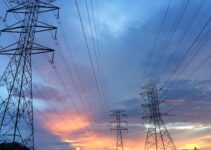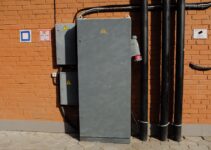An Onan generator is a reliable source of power for your RV or other applications. However, there may be times when your Onan generator cranks but won’t start. This can be frustrating, especially when you’re in need of power.
In this troubleshooting guide, we will explore common reasons why your Onan generator won’t start and provide you with solutions to fix the issue.
Common reasons why your Onan generator won’t start
If you’re facing the problem of your Onan generator cranking but not starting, there are several potential issues that could be causing this. Here are some common reasons why your generator won’t start:
- Empty or contaminated fuel tank: One of the most common reasons for a generator not starting is an empty or contaminated fuel tank. Ensure that your generator has enough fuel and that the fuel is clean. Contaminated fuel can clog the fuel system and prevent the generator from starting.
- Fuel pump failure: The fuel pump is responsible for delivering fuel from the tank to the engine. A faulty fuel pump can prevent the generator from starting. Check the fuel pump for any signs of damage or malfunction.
- Ignition system problems: Faulty ignition components such as spark plugs, ignition coils, or ignition modules can prevent the generator from starting. Inspect these components for any signs of wear or damage.
- Carburetor issues: The carburetor plays a crucial role in the starting process of your generator. A clogged or malfunctioning carburetor can prevent the generator from starting. Clean or repair the carburetor if necessary.
- Starting mechanism problems: Issues with the starting mechanism, such as a faulty starter motor or a worn-out starter gear, can prevent the generator from starting. Inspect the starting mechanism and replace any damaged components.
How to inspect the fuel system of your Onan generator
The fuel system of your Onan generator is a critical component that needs to be in good working condition for the generator to start. Here’s how you can inspect the fuel system:
- Check the fuel level: Ensure that your generator has enough fuel to operate. If the fuel tank is empty, refill it with clean, fresh fuel.
- Inspect the fuel lines: Look for any signs of leaks or damage in the fuel lines. Replace any damaged fuel lines to prevent fuel leakage.
- Clean the fuel filter: A clogged fuel filter can restrict fuel flow and prevent the generator from starting. Remove the fuel filter and clean or replace it if necessary.
- Examine the fuel pump: Inspect the fuel pump for any signs of damage or malfunction. If the fuel pump is faulty, it may need to be replaced.
Checking the spark plug for ignition problems
The spark plug is an essential component of the ignition system that ignites the fuel-air mixture in the engine. Here’s how you can check the spark plug for ignition problems:
- Remove the spark plug: Locate the spark plug and carefully remove it using a spark plug socket.
- Inspect the spark plug: Check the spark plug for any signs of wear, damage, or carbon buildup. Clean or replace the spark plug if necessary.
- Check the spark plug gap: Ensure that the spark plug gap is set to the manufacturer’s specifications. Adjust the gap if needed.
- Test the spark plug for spark: Connect the spark plug to the ignition coil wire and ground the spark plug against the engine. Crank the generator and check for a spark at the tip of the spark plug. If there is no spark, there may be an issue with the ignition system.
Understanding the role of the carburetor in starting your generator
The carburetor is responsible for mixing fuel and air in the correct ratio for combustion. Here’s what you need to know about the carburetor and its role in starting your generator:
- The carburetor draws fuel from the fuel tank and mixes it with air to create a combustible mixture.
- A clogged or dirty carburetor can restrict fuel flow and prevent the generator from starting.
- Clean the carburetor regularly to remove any dirt, debris, or fuel deposits that may be causing a blockage.
- If cleaning the carburetor doesn’t solve the problem, there may be internal damage or wear that requires professional repair or replacement.
Tips for troubleshooting the starting mechanism of your Onan generator
If your Onan generator cranks but won’t start, there may be issues with the starting mechanism. Here are some tips for troubleshooting the starting mechanism:
- Check the battery: Ensure that the battery is fully charged and in good condition. A weak or dead battery can prevent the generator from starting.
- Inspect the starter motor: Look for any signs of damage or wear on the starter motor. If the starter motor fails, it may need to be replaced.
- Examine the starter gear: The starter gear engages with the engine flywheel to start the generator. If the starter gear is worn or damaged, it may not engage properly. Replace the starter gear if necessary.
- Test the starter solenoid: The starter solenoid is responsible for sending power to the starter motor. If the solenoid is faulty, it may need to be replaced.
Seeking professional help for complex generator starting issues
If you’ve tried troubleshooting and your Onan generator still won’t start, it may be time to seek professional help. Complex generator starting issues may require the expertise of a trained technician. A professional can diagnose and repair the problem, ensuring your generator operates efficiently.
Frequently Asked Questions about Onan Generator Cranks but Won’t Start: How to Fix
Q: Why is my Onan generator cranking but not starting?
A: There can be several reasons why your Onan generator is cranking but not starting. Common causes include empty or contaminated fuel tank, fuel pump failure, ignition system problems, carburetor issues, and starting mechanism problems.
Q: How can I inspect the fuel system of my Onan generator?
A: To inspect the fuel system of your Onan generator, check the fuel level, inspect the fuel lines for leaks or damage, clean the fuel filter, and examine the fuel pump for any signs of damage or malfunction.
Q: What should I do if the spark plug is causing ignition problems?
A: If the spark plug is causing ignition problems, remove and inspect the spark plug for wear, damage, or carbon buildup. Clean or replace the spark plug if necessary. Also, check the spark plug gap and test for spark.
Q: How does the carburetor affect the starting of my generator?
A: The carburetor plays a vital role in the starting process of your generator. A clogged or dirty carburetor can restrict fuel flow and prevent the generator from starting. Regular cleaning is essential to ensure proper carburetor function.
Q: What should I do if troubleshooting doesn’t solve the starting issue?
A: If troubleshooting doesn’t solve the starting issue, it’s recommended to seek professional help. Complex generator starting issues may require the expertise of a trained technician to diagnose and repair the problem.
Expert Advice
When dealing with a generator that cranks but won’t start, it’s important to follow a systematic troubleshooting approach. Start by checking the fuel system, inspecting the spark plug, and examining the carburetor.
If these components are in good working condition, move on to troubleshooting the starting mechanism. If all else fails, don’t hesitate to seek professional help. A trained technician can diagnose and fix complex generator starting issues, ensuring your generator operates reliably.






